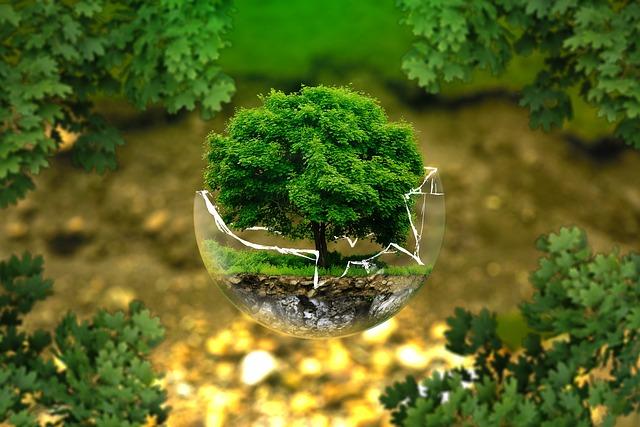Table of Contents
ToggleWhat is a Green Environment?
A green environment refers to an ecosystem or space that is clean, healthy, and in balance with nature. It is characterized by lush greenery, clean air, pure water, and the presence of diverse wildlife. A green environment integrates sustainable practices that minimize environmental harm, promote biodiversity, and reduce human impact on the planet’s ecosystems.
The goal of a https://sleep-environment.org is to ensure that human activities do not negatively impact the environment, and instead, actively contribute to its preservation and restoration. It includes aspects such as reducing pollution, conserving resources, protecting wildlife habitats, and fostering the growth of plants and trees.
Key Elements of a Green Environment
1. Clean Air and Water
A green environment relies on the availability of clean air and water. Reducing air pollution from industrial emissions, vehicle exhaust, and deforestation is essential to improving air quality. Similarly, ensuring that water sources remain uncontaminated through responsible waste management, proper sewage treatment, and pollution control helps to protect ecosystems and human health.
2. Biodiversity Conservation
A green environment prioritizes the protection and preservation of biodiversity. This includes safeguarding various species of plants, animals, and microorganisms that are essential to maintaining ecological balance. Protecting natural habitats, reducing deforestation, and establishing wildlife reserves are crucial steps toward ensuring biodiversity thrives.
3. Sustainable Resource Use
A sustainable green environment advocates for the responsible use of resources, ensuring that materials, energy, and water are used efficiently and not wasted. This includes shifting towards renewable energy sources (e.g., solar, wind), reducing reliance on fossil fuels, and promoting practices such as recycling, composting, and reusing.
4. Waste Reduction and Management
Waste reduction is a core principle of a green environment. This involves minimizing waste generation, reusing products and materials, and recycling whenever possible. Proper disposal and management of waste—such as reducing plastic use and promoting organic waste composting—are essential to maintaining a clean and sustainable environment.
5. Green Spaces and Urban Gardens
Creating green spaces within cities and urban areas helps reduce pollution, increase biodiversity, and provide recreational areas for communities. Urban gardens, green rooftops, and parks contribute to a cleaner, healthier environment and offer spaces for people to reconnect with nature.
6. Climate Change Mitigation
A green environment actively works toward mitigating climate change. This involves reducing greenhouse gas emissions, protecting forests, and supporting sustainable agriculture. Measures to mitigate climate change also include promoting low-carbon transportation, supporting eco-friendly policies, and encouraging environmental conservation efforts.
Importance of a Green Environment
1. Health Benefits
Living in or near a green environment offers numerous health benefits. Clean air, access to green spaces, and natural surroundings help reduce stress, promote physical activity, and improve mental health. Studies have shown that spending time in nature can lower blood pressure, reduce anxiety, and increase overall well-being.
- Air Quality: Reduced air pollution can lower the risk of respiratory illnesses, such as asthma and bronchitis.
- Mental Health: Green spaces and natural environments are linked to lower levels of depression, anxiety, and mental fatigue.
2. Climate Change Mitigation
A green environment helps combat climate change by reducing carbon footprints. By adopting renewable energy, increasing energy efficiency, and supporting sustainable practices, we can reduce greenhouse gas emissions and slow the progression of global warming. Deforestation and land degradation, which contribute to climate change, are also minimized in a green environment.
3. Biodiversity Preservation
Protecting and restoring natural habitats ensures the survival of diverse species. A healthy ecosystem with rich biodiversity is essential for maintaining balance within the environment, as each species plays a unique role in the food chain and ecosystem functions.
- Pollination: Pollinators such as bees and butterflies are crucial for food production. A green environment protects these species, ensuring the stability of ecosystems.
- Soil Health: Diverse plant species improve soil quality and prevent erosion, promoting better agricultural productivity.
4. Resource Conservation
A green environment encourages the responsible use of resources, which is critical for long-term sustainability. By conserving water, reducing energy consumption, and adopting sustainable farming practices, we can ensure that natural resources remain abundant for future generations.
- Water Conservation: Efficient water management ensures that clean water resources are available for both ecosystems and human needs.
- Energy Efficiency: Using renewable energy sources and reducing energy waste help decrease dependence on fossil fuels.
5. Economic Benefits
Investing in green environments can have positive economic impacts. Sustainable industries, such as renewable energy, eco-tourism, and organic farming, create job opportunities and stimulate economic growth. Moreover, a healthy environment reduces healthcare costs associated with pollution and environmental degradation.
- Job Creation: Green industries contribute to job creation in sectors like clean energy, waste management, and environmental protection.
- Eco-Tourism: Protecting natural landscapes and wildlife habitats can boost tourism, providing both economic and environmental benefits.
How to Achieve a Green Environment
1. Reduce, Reuse, and Recycle
One of the most effective ways to contribute to a green environment is by minimizing waste. The three Rs—reduce, reuse, and recycle—are key principles for waste management. By reducing consumption, reusing items, and recycling materials, we can help decrease landfill waste and conserve resources.
- Plastic Reduction: Reducing plastic use and opting for reusable bags, bottles, and containers can help mitigate plastic pollution.
- Recycling: Properly sorting recyclables, such as paper, glass, and aluminum, reduces the need for raw materials and reduces waste.
2. Adopt Renewable Energy Sources
Shifting from fossil fuels to renewable energy sources like solar, wind, and hydropower is crucial for reducing greenhouse gas emissions. Installing solar panels, using wind turbines, and supporting policies that promote renewable energy will help reduce carbon footprints.
3. Plant Trees and Protect Forests
Trees are vital for absorbing carbon dioxide, improving air quality, and providing habitat for wildlife. Planting trees in urban areas, supporting reforestation efforts, and protecting forests from deforestation are essential steps in creating a green environment.
4. Sustainable Transportation
Using eco-friendly modes of transportation, such as walking, cycling, or driving electric vehicles, can reduce air pollution and reduce carbon emissions. Supporting public transportation, carpooling, and using fuel-efficient vehicles can also contribute to a greener environment.
5. Support Eco-Friendly Practices in Agriculture
Promoting sustainable farming practices, such as organic farming, agroforestry, and water-efficient irrigation, helps protect the land, reduce pesticide use, and support biodiversity. Supporting local, sustainable food systems can also reduce the carbon footprint associated with food transportation.
6. Green Building and Urban Planning
Designing energy-efficient, sustainable buildings and promoting green urban planning can reduce the environmental impact of cities. Green buildings, with features such as energy-efficient appliances, sustainable materials, and solar power, help reduce energy consumption and waste.
- Green Roofs and Walls: Incorporating vegetation into urban buildings helps improve air quality, manage stormwater, and reduce the urban heat island effect.
- Urban Parks: Creating parks and green spaces within cities improves residents’ quality of life while supporting biodiversity.
7. Education and Awareness
Raising awareness about environmental issues and promoting sustainable practices can empower individuals and communities to take action. Environmental education initiatives can inspire people to make eco-friendly choices in their daily lives, from reducing waste to conserving water and energy.
Conclusion
A green environment is essential for the well-being of humans, wildlife, and the planet as a whole. By focusing on sustainability, biodiversity conservation, and reducing pollution, we can create healthier ecosystems and a more prosperous future. Everyone has a role to play in fostering a green environment—from individuals making sustainable choices to governments and businesses adopting policies that prioritize environmental protection. By working together, we can ensure that future generations enjoy a clean, safe, and vibrant world.



